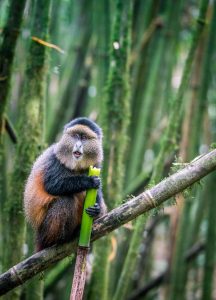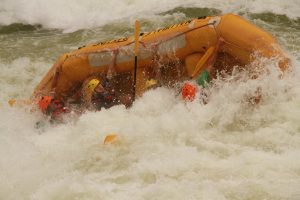Uganda is a country of breathtaking biodiversity, known for its lush landscapes, rich ecosystems, and some of the most intimate wildlife encounters in Africa. While gorilla trekking often dominates the headlines, chimpanzee trekking is an equally awe-inspiring experience especially for those interested in understanding our closest living relatives in their natural environment. For travelers who value freedom, flexibility, and budget-conscious adventure, planning a do-it-yourself chimpanzee trekking trip in Uganda is not only possible, it’s also immensely rewarding. By taking the time to organize your own chimpanzee trek, you gain a deeper connection with the country, enjoy personalized itineraries, and often reduce your overall travel costs.
Chimpanzee trekking in Uganda offers a raw, immersive adventure into the heart of Africa’s rainforests. Imagine walking through mist-covered forests at dawn, listening to distant whoops and shrieks, and then suddenly spotting a family of wild chimpanzees grooming, feeding, or vocalizing in the canopy above. Unlike zoo visits or sanctuaries, this is wildlife observation at its most authentic, with no barriers between you and the jungle’s rhythms. In Uganda, this experience is made accessible through multiple trekking sites scattered across different national parks and forest reserves. Each site offers its own atmosphere, difficulty level, and cost structure, giving travelers numerous ways to tailor their adventures based on interests, time, and budget.
Why Choose Uganda for Independent Chimpanzee Trekking?
Uganda is home to more than 5,000 wild chimpanzees, making it one of the best destinations in East Africa for primate tracking. With multiple trekking locations spread across western and southern Uganda, the country provides flexibility for independent travelers looking to include chimpanzee trekking into broader itineraries. Importantly, Uganda has a well-established permit system and conservation infrastructure, allowing individuals to safely engage with nature without relying on expensive safari companies. The Uganda Wildlife Authority (UWA) governs trekking rules, ensuring wildlife protection while making the activity accessible and enjoyable. By planning your own trek, you bypass middlemen, giving you more control over the cost, accommodation, and travel logistics.
Another benefit of chimpanzee trekking in Uganda is the variety of environments. From the dense tropical rainforest of Kibale to the sunken jungle gorge of Kyambura and the lesser-known Kalinzu Reserve, each destination offers a unique window into chimpanzee behavior. Beyond chimpanzees, many of these parks also host other primates like colobus monkeys, red-tailed monkeys, and L’Hoest’s monkeys, adding to the richness of the forest experience. For travelers seeking to combine chimpanzee trekking with birdwatching, nature hikes, or traditional safaris, Uganda’s primate parks present an excellent multi-faceted itinerary.
Where Can You Do DIY Chimpanzee Trekking in Uganda?
Four main destinations offer regular chimpanzee trekking in Uganda, each with distinct pros and cons for independent travelers. Choosing the right one depends on your travel route, budget, and interest in surrounding activities.
Kibale Forest National Park
Kibale is Uganda’s most popular chimpanzee trekking destination and for good reason. Hosting over 1,500 chimpanzees and 12 other primate species, this park near Fort Portal is often referred to as the “primate capital of East Africa.” The trekking infrastructure is highly developed, the rangers are knowledgeable, and the chances of spotting chimpanzees are close to 90%. Kibale also offers a chimpanzee habituation experience, allowing visitors to spend up to 4 hours with semi-habituated chimps for deeper observation.
If you’re traveling independently, you can reach Kibale from Kampala or Entebbe by bus to Fort Portal, then use local taxis or a motorcycle (boda-boda) to access Kanyanchu Visitor Center. Accommodation options in the area range from budget-friendly guesthouses to high-end eco-lodges, giving solo travelers plenty of choices.
Budongo Forest (Murchison Falls National Park)
Budongo Forest, located at the southern edge of Murchison Falls National Park, offers a quieter and more remote trekking experience. While not as crowded as Kibale, it is well-managed by the Jane Goodall Institute and Uganda Lodges. The forest features towering mahogany trees, dense undergrowth, and a surprisingly high chimpanzee population. Trekking here is ideal for those combining chimpanzee viewing with a traditional savannah safari in Murchison Falls, one of Uganda’s top national parks.
You can book permits directly through the Budongo Eco Lodge office or UWA headquarters. Public transport from Kampala to Masindi followed by a short taxi ride can get you to the trailhead affordably.
Kyambura Gorge (Queen Elizabeth National Park)
Kyambura Gorge provides one of the most visually stunning trekking environments in Uganda. Known as the “Valley of Apes,” this steep, forested gorge cuts dramatically through an otherwise flat savannah landscape. The resident chimpanzee population here is smaller and sightings less consistent, but the scenery is absolutely worth the effort. The lower permit cost also makes Kyambura attractive to budget travelers who are already in the Queen Elizabeth National Park area.
You can book permits at the Mweya Visitor Center or through UWA’s offices. Getting there is possible via public buses to Kasese or Rubirizi, followed by a short boda-boda ride to the gorge.
Kalinzu Forest Reserve
Just outside Queen Elizabeth National Park, Kalinzu Forest offers an off-the-beaten-path experience for travelers seeking raw, unfiltered adventure. The reserve has fewer tourists, more affordable permit costs, and a surprisingly high rate of chimpanzee sightings. Kalinzu is run by the National Forestry Authority, and you can book your trek at the forest station. Lodging options are limited but adequate for budget travelers.
This location suits those who want to avoid crowds and experience a rustic environment without sacrificing the quality of their trek.
How to Book Chimpanzee Trekking Permits Without a Tour Operator
Booking permits independently is entirely feasible, though it requires a bit of forward planning. You can book through the Uganda Wildlife Authority (UWA) by emailing or calling their headquarters in Kampala. Payment is typically via bank deposit, which you can arrange through a local bank or at a UWA office if you’re already in the country. Some trekking locations like Kalinzu allow on-site payments, although advance booking is always safer during peak season (June–August, December–February).
You’ll need to provide:
- Full name
- Passport details
- Desired trekking date and location
Keep your payment receipts and bring them along to the trekking site. It’s also advisable to call ahead to confirm availability, especially for more remote areas.
What to Expect on the Day of the Trek
Chimpanzee treks usually begin early in the morning with a briefing by park rangers. You’ll be assigned to a group based on your fitness level and tracking needs. Treks range from 1 to 5 hours depending on the chimpanzees’ location, with one hour of direct observation once a group is located. Rangers and guides communicate via walkie-talkie to increase the chances of a successful encounter.
During the trek, expect to walk through rugged, uneven terrain, occasionally thick with vegetation. You may also encounter other wildlife such as forest elephants, duikers, and numerous bird species. Once you find the chimps, the experience becomes surreal. Watching them groom, communicate, feed, or swing between branches reveals their intelligence, social structures, and striking resemblance to human behavior.
Tips for a Successful DIY Chimpanzee Trek
- Arrive the night before: To avoid delays and guarantee your spot in the morning briefing.
- Dress appropriately: Long sleeves, hiking boots, and rain gear are essential.
- Carry essentials: Water, snacks, insect repellent, and a fully charged camera.
- Avoid strong scents: Chimpanzees have a sensitive sense of smell.
- Respect guidelines: No flash photography, maintain distance, and stay quiet.
Final Thoughts
Embarking on a do-it-yourself chimpanzee trekking adventure in Uganda is not only an achievable goal for independent travelers—it’s also one of the most exhilarating and educational experiences you can have on the continent. The process of planning and executing the trip on your own allows for more personal engagement with the country, its people, and its pristine natural environments.
From the misty jungles of Kibale to the dramatic depths of Kyambura Gorge, Uganda’s chimpanzee habitats offer diverse trekking opportunities that cater to all types of travelers. With proper research, timely booking, and a spirit of adventure, you can experience the magic of the wild—on your own terms.
Uganda is waiting. And so are the chimps.




